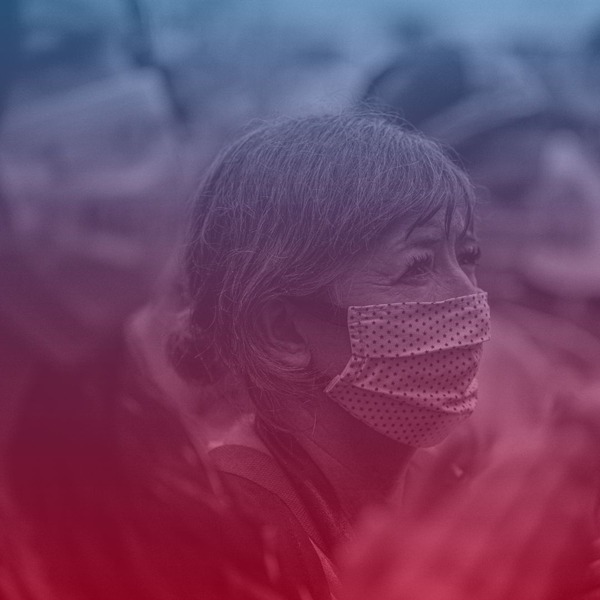
Written by: Marina Muñoz Bernad
Edited by: Sibilla Gosso
Gender plays a pivotal role in the field of peacebuilding and, particularly, in the establishment of long-term conditions for sustainable peace through a gendered perspective. This article aims to explore the complex relationship between gender and peacebuilding, highlighting how gender power dynamics shape peace processes. Firstly, it presents a theoretical framework in terms of conflict resolution and conflict transformation, alongside the significance of engaging a gendered perspective. Secondly, it seeks to understand why it is important to integrate women’s experiences, more specifically as the principal victims of sexual violence in armed conflict. Thirdly, it presents the positive contributions of gender equality and women’s participation in peacebuilding initiatives and how they can contribute to peace negotiations by playing an active role. Finally, it reaches out conclusions about the importance of including women in future peacekeeping negotiations.
Keywords: conflict resolution, feminist theory, sexual violence, peacemaking, peacetransformation
INTRODUCTION
According to the Geneva Academy (2023) Rule of Law in Armed Conflict Online Portal (RULAC) that classifies all situations of armed conflict, today there are more than 110 armed conflicts worldwide. The Middle East and North Africa region (MENA) is the region most affected with more than 45 armed conflicts taking place there, including in countries such as Cyprus, Egypt, Iraq, Israel, Libya, Morocco, Palestine, Syria, Turkey, Yemen and Western Sahara. The MENA region is followed by Africa (35), Asia (21), Europe (7) and Latin America (6). Most of them could be categorised as “new wars” according to Mary Kaldor, as the majority are internal conflicts, with civilians as the primary targets, involving a range of actors including both state and non-state entities, and with the central aim of perpetuating cycles of violence (Kaldor, 2005). According to the new report by UN Secretary General Antonio Guterres, drafted by UN Women, in 2022, more than 600 million women and girls lived in conflict-affected countries, representing an increase of 50 per cent since 2017 (UN Women, 2023). Out of the 18 peace agreements reached in 2022, only the one from South Sudan had the participation or was witnessed by a local women’s organisation. This report was published twenty-three years after Security Council Resolution 1325 (2000) which called for “an increase in the participation of women at decision-making levels in conflict resolution and peace processes” and expressed “its willingness to incorporate a gender perspective into peacekeeping operations” (p. 2). The continued exclusion of women in peace processes ignores their capacity to enhance a more effective response to global security threats, failing in reflecting the conflict experience of half of their population (Norris et al., 2023). This article aims to understand how women can actively engage in peacebuilding processes, not only as the primary victims of violence but also as active participants. It explores the capacity and contributions of women in creating peaceful environments, highlighting their crucial role not only in conflict mitigation and resolution but also in the prevention of future conflicts. By establishing this connection, the intricate relationship between women and peace processes is highlighted. It demonstrates how women’s unique perspectives and experiences can enrich peacebuilding efforts, offering deeper insights into the challenges and opportunities that arise. This analysis emphasises the need to recognize and integrate the diverse contributions of women in all stages of peace processes, ensuring that their voices are heard and their impact is acknowledged.
THEORETICAL FRAMEWORK
The concept of peacebuilding emerged over thirty years ago within the realm of peace studies. In 1975, Johan Galtung introduced this term in his pioneer publication “Three Approaches to Peace: Peacekeeping, Peacemaking, and Peacebuilding”. His conflict theory has become a cornerstone in the field of peace studies. According to this concept, peace must be achieved through the theory and practice of conflict resolution. In sum, the basic elements that characterise this method are: (1) overcoming the conflict, (2) creating the needed conditions for the transformative elements to become the dominant ones, (3) enhancing dialogue, (4) considering all actors as equals, (5) the presence of a moderator between the implicated parts, (6) the notions of the 3R – reconciliation, reconstruction and resolution – (7) and to consider the different levels: micro, meso, macro and mega (Calderón Concha, 2009). John Paul Ledereach, another key scholar in the field of peace studies, expanded the term of peacebuilding. Lederach prefers to speak of conflict transformation instead of conflict resolution which involves a holistic and multi-faceted approach when dealing with violent conflict as well as an ongoing process of change from negative to positive relations and structures. The process of conflict transformation not only aims to resolve undesirable situations but also explores how to construct positive dynamics. It addresses not only immediate crises but also seeks to address conflicts from a long-term perspective by promoting social change (International Institute Catalan for Peace, n.d.).
Gender is a social construction, something culturally and socially produced and reproduced in a process that is not biological or neither “natural”. Rather, gender should be understood as a social construction in order to organise our societies. According to the definition given by WHO (2023), “Gender refers to the characteristics of women, men, girls and boys that are socially constructed. Gender is hierarchical and produces inequalities that intersect with other social and economic inequalities”. In addition, women and men actively participate in maintaining these patriarchal relations (gender hierarchy). Including a gender perspective in peace processes has been advocated and defended by many women. But, what is a gender perspective? According to Alvarado Cóbar, Bjertén-Günther & Jung (2018), four key aspects can be identified: first, the inclusion of women and marginalised groups in participating in peace processes. Second, a gender perspective should address the differences in needs and demands between genders, since their experiences are different, multiple needs must be addressed in order to ensure gender-based equality. Third, the imperative to acknowledge that peace agreements are not gender neutral and rather they lack a gender-sensitive language. Finally, the call for a deep understanding of power relations between genders and how they relate to the existing conflict.
“Inclusion and gender sensitivity in the context of peace processes emanate from the need to mainstream gender and transform the root causes of violence, as well as the need for the meaningful inclusion of women in all aspects of peace negotiations, peacekeeping and peacebuilding. The exclusion of a gender perspective works to the detriment of peacebuilding efforts and has serious implications for the type of post-conflict society that emerges and those who can participate in it” (p. 5)
The academic study of conflict resolution has many things in common with the feminist theory of International Relations (IR). Both challenge the traditional perspective grounded by realists and neorealists as well as the belief that war is not inevitable and yet, feminist scholars have been constantly excluded and marginalised within the field of conflict resolution. Feminist perspectives have denounced the absence of women at all decision-making levels, and more specifically, during negotiations. Debates around gender inclusiveness and its impact on peacemaking have become a common ground in nongovernmental organisations (NGOs), focusing on transforming policies and practices in the direction of gender-mainstreaming (Sharoni, 2010). While much of the research concerning women and post-conflict reconstruction predominantly portrays them as victims and passive recipients, the reality underscores their pivotal role in shaping post-conflict reconstruction efforts. The victimisation of women through rape, human trafficking and forced marriage, describes the situation of inequality and structural violence that they suffer all around the world. However, keeping only in mind this viewpoint can undermine the capacity of women in bringing opportunities and constructing bridges for peace. It becomes imperative to recognize that women hold substantial influence and agency in these processes, thereby necessitating a comprehensive understanding of their multifaceted contributions. Stone (2014) conducted a research analysis and resolved that women, in fact, do hold a vital contribution to peace, although an institutionalisation of gender equality through quotas is needed in order to have long-lasting results. The finding revealed that participation of women increased the possibility of violence ending within a year by 24% and that the establishment of gender quotas for national legislatures increased the chances of peace within five years by 27%. However, local women were identified as vital in order to create long-term solutions and peace agreements, and not the mere presence of women. Furthermore, the academic field has widely accepted the notion that women’s activism predominantly stems from their roles as mothers. This perspective fails to acknowledge the diverse motivations and experiences that bring women into activism. A multitude of factors such as personal convictions, professional experiences, socio-political awareness, etc. might be also important drivers. By attributing women’s activism primarily to maternal instincts, society excludes all those women who are not mothers by reducing their role to the biological function and reinforcing the stereotypical role that society imposes (Cockburn, 2007). If a change in perspective is needed to view women as active participants in peace-building processes, it must extend beyond their roles as mothers and primary caregivers. Women should also be recognized as combatants, peace builders, politicians, and activists (Obaid & Alwan, 2022), since it becomes essential in order to foster an inclusive and representative movement that values the efforts of all women, regardless of their maternal status.
The UN has unfolded a campaign with the objective of emphasising the role of women in peace-building and conflict resolution. In order to do so, a series of five films was commissioned by UN Women. The series is labelled #WeAreHere, in an attempt to give visibility to the work of women in Iraq, Yemen, Syria and Palestine. The idea is to shift the perception of women as only beneficiaries of humanitarian assistance and rather include them as individuals in positions of decision-making authority, with the capacity to confront radicalism and promote inclusivity and tolerance within post-conflict communities (Black, 2016)
SEXUAL VIOLENCE DURING WAR TIMES
The requirement to be attentive to women’s experiences would significantly contribute to the analysis and resolution of conflicts. Many feminists have insisted on counting their experience considering it alongside men’s experience. Others, however, argue that due to gendered socialisation, women may contribute in a unique manner to offer creative approaches to peacemaking (Calderón Concha, 2009). The initial primary approach views women primarily as victims, acknowledging that conflict-related sexual violence (CRSV) predominantly impacts women. However, it’s important to note that men can also fall victim to sexual aggression. CRSV encompasses various forms such as rape, sexual slavery, forced prostitution, and other types of sexual abuse that occur within the context of armed conflict or war (Kuehnast, 2023). It is crucial to enhance a gendered approach to peacebuilding as it means to recognise gendered vulnerabilities and ensure the protection of women and girls. Gender-based violence refers to violence induced because of their gender (Speake, 2013). Conflict affects men and women as they have different social roles, and in consequence they are targeted differently in accordance to their respective genders. Women often experience multiple forms of violence, and more specifically the target of women’s bodies has been identified as a systematic strategy during conflict.
Sexual violence during war times has been historically considered more as an individual act of violence rather than politically and ideologically motivated. In recent times, the study of sexual violence as a systemic tactic in conflicts throughout history and in all modern wars has been in the spotlight of many scholars, in an attempt to give voice to those women who suffer the terrible consequences of it. Kaldor (2001), conceived the term “new wars’ to emphasise the differences regarding the old wars. The term was coined after the study of the Balkans war, which marked a turning point towards the recognition of sexual violence as a war crime, and crime against humanity. While the concept of “new” does not imply entirely new patterns of violence and methods of warfare, it highlights and draws attention to the issues with conceptualising conflicts using “old terms.” This distinction underscores the need to reframe our understanding of contemporary conflicts to better address their unique characteristics and complexities. According to Kaldor, in new wars, civilian women are the main victims of extreme sexual violence, as part of a systematic strategy of political control, a “tactic of war”. In Bosnia and Herzegovina, various reports revealed that mass rape was used as a psychological warfare tactic. Similarly, during the Rwandan genocide, women suffered not only from rape but also from mutilation and killing. Although sexual violence has been present also in the “old wars” as a deliberated and systematic feature, as in the case of Chinese Nanking during World War II and confort women by the Japanese army between 1928-1945, the nature of the instrumentalization in new wars is very different. Civilian women are the primary targets of severe sexual violence, such as rape and mutilation, which are used as deliberate strategies of political control. This ‘tactic of war’ is not merely a side effect of wars, as traditionally believed but rather are meant to instil fear in local populations as a part of a strategy to win (Chinkin & Kaldor, 2013). The crucial point to remember is that, unlike other forms of direct violence such as shooting someone from a distance, sexual violence involves deliberate intentionality and aggressive physical contact. It is never incidental (Kuehnast, 2023). Activists and scholars have emphasised the strategic benefits of sexual violence, and the use of rape as a cheap weapon. According to them, sexual aggression is a form of humiliation and breaks the morale of the enemy, generating social fear (Nordas & Cohen 2021). The inclusion of sexual violence as a subject worthy of empirical investigation within the field of political science has helped address the longstanding issue of neglecting gender-related concerns in studies of conflict. Rather than conceiving sexual violence as a completely new practice, the conceptualisation helps to highlight the absence of gender as a category not only in peaceprocesses but also in theories of international relations and the nation-state system. Highlighting sexual violence as a wartime strategy aims to expose the underlying motivations for this tactic: it results in the eradication of safe spaces in society, rendering women and girls particularly susceptible to repeated victimization throughout the duration of the conflict (Leatherman, 2007).
JOURNEY TOWARDS RECOGNITION
The recognition of sexual violence as a war crime can be traced back to the Hague Conventions of 1899 and 1907, which, although they did not explicitly refer to rape and other sexual violence, they provided an obligation towards “family honours” and “religious convictions and practices”. In this sense, rape was often viewed through the lens of a woman’s honour, reinforcing the longstanding patriarchal notion that sexual offences were of lesser significance. According to this view, female honour was associated with chastity, and its loss implied a loss of respect. A raped woman was viewed as dishonoured. The emphasis on honour shifts the focus away from rape and other forms of sexual violence, which are crimes that attack the autonomy, freedom, and sexual integrity of the assaulted woman, and complicates their understanding as violence. Honour is contrasted with that of the father-husband or with national or ethnic honour (De Alencar, 2011). The recognition of sexual crimes in international criminal law came with the advent of the Geneva Conventions (1949): their Additional Protocols included the obligation of protecting women and children in international armed and prohibiting rape and regarding it as an outrage upon the victim’s dignity. During the Nuremberg War Crime Trials, for example, evidence was provided indicating that the German Army Command set up a brothel in Smolensk where Russian women were forcibly taken. Nevertheless, Moodrick Even Khen & Hagay-Frey (2013) described the period during which the Nuremberg trials took place as the ‘era of silence,’ during which sexual crimes were considered an inevitable side effect of war and thus went unpunished. As a result, sexual assault was not included in the Nuremberg Charter, and Article 6 of the Charter did not include a reference to sexual offences. The fact that the judges were all men led to a masculine perception of what was important. The result was that violent gendered offences were not contemplated as crimes against humanity. The Nuremberg Tribunal experience stresses the exclusion of women’s suffering in the legal background. Sexual abuse was also reported during other conflicts, such as the Vietnam War, where American soldiers frequently raped ‘enemy women’ (Seifert, 1996). Similarly, during the Tokyo Tribunals following the Second World War, evidence of sexual violence committed by soldiers was presented. However, these crimes were completely overlooked by the Tribunals, as was the case in Nuremberg, where no explicit charges of sexual violence or rape were made.
It was not until the establishment of the International Criminal Tribunals for the former Yugoslavia (ICTY) and Rwanda (ICTR), two ad hoc tribunals, that a significant step forward was made. The acknowledgment and categorization of sexual crimes as serious international offences, including them in categories such as war crimes, genocide, and crimes against humanity, shattered the silence and challenged the honor-based boundaries established by the Geneva Conventions. The case of Bosnia-Herzegovina was a point of inflexion when it comes to recognizing sexual violence as a war weapon, as it was the first time that defendants were convicted of sexual assault crimes, aiming to end impunity. Operating from 1993 to 2017, it significantly impacted international humanitarian law, empowered victims to share their traumatic experiences, and held perpetrators of atrocities during wartime to account. The statute of the ICTR establishes rape and forced prostitution as violations of Article 3 common to the Geneva Conventions and Protocol II. The atrocities committed in the ex-Yugoslavia and Rwanda – late in 1992 the Serbian Army had established rape camps on the territory – laid the groundwork for the persecution of sexual violence as a war crime. The approval of the Rome Statute of the International Criminal Court (ICC) in 1998 represented a significant advancement in the prosecution of sexual crimes in international criminal law. Rape and other forms of violence are included as serious international offenses. Unlike the ICTY and the ICTR, which had limited jurisdiction and temporary existence, the ICC is a permanent court that exercises its jurisdiction to investigate genocide, crimes against humanity, and war crimes. The United Nations Security Council Resolution (UNSCR) 1325 was considered a milestone document in reaffirming the importance of women’s participation and contribution to the peace and security agenda. The Resolution recognised the different experiences during and post-conflict as well as women’s capacity to greatly contribute to peacebuilding and security (Beever, 2010).
The lack of feminine experience and gender perspective in all legal systems has been highlighted by many scholars who aim to denounce this marginalisation. Crimes against women were considered unavoidable consequences, and the conquering of women’s bodies by the enemy was seen as a victory as well as proof of soldiers’ masculinity. However, male bodies are also victims of a systematic attack: bodies massively wounded and the idea that their bodies should be given to the well-being of the nation (Seifert, 1996).
“This also means that violence committed against women is directed against the physical and personal integrity of a group. The rape of women of a community, culture, or nation can be regarded — and is so regarded — as a symbolic rape of the body of that community (…) Here a further aspect of the destruction of the culture becomes obvious, that is, the idea of using rape as pollution of the enemy community” (Seifert, 1996: 39)
CONTRIBUTIONS OF A GENDER PERSPECTIVE
As mentioned in the previous sections, a gender perspective is needed for several reasons. Firstly, it avoids marginalising women’s experiences in conflict and resolution, ensuring a comprehensive understanding where all genders are recognized and addressed. Secondly, peace resolutions that incorporate the voices and experiences of all genders are more likely to be inclusive and representative. This inclusivity fosters broader support for the peace process and enhances its legitimacy and sustainability. Thirdly, women often face specific challenges during and after conflicts, such as violence, displacement, and economic marginalisation. A gender perspective ensures that these issues are included in the peace agenda. Finally, empowering women to actively participate in peace processes can prevent the recurrence of gender-based violence and discrimination. In this sense, the Security Council adopted Resolution 1325 on Women, Peace, and Security on 31 October 2000, reaffirming the need to enhance women’s participation in the prevention and resolution of conflicts, peace negotiations, peace-building, and peacekeeping.
In the case of Bosnia-Herzegovina, feminist perspectives eroded not from the state or political parties but rather from female scholars, journalists and activists that aimed to change Yugoslav society from within. The first NGO, Medica Zenica, was established in 1993 in BiH, at it aimed to help women find a refuge after being rape in war camps and in order to give them a safe space were they could expressed and share their experience. Spahić-Šiljak (2013) mentions five key channels for feminists development in BiH: (1) Medica Zenica which focused on helping women from war camps (2) the NGO Žene Ženama (Women to Women) that enhance women’s studies program in Sarajevo (3) the integration of feminist theology courses at the Sarajevo University (4) the publication of relevant literature and magazines of feminist theory into the local languages, and finally (5) the development of new tools for UNSCR 1325. These five channels offered a supportive and secure environment for both female and male feminist theologians to learn, write, explore, and build capacities within local organisations and academic institutions. This facilitated the integration of both gendered and religious perspectives in their work, aiding in healing traumas and promoting reconciliation.
After the Bosnian War, victims included not only women who had been repeatedly raped but also the resulting offspring from these forced impregnations, known as “invisible children.” Both women and these children faced intra- and inter-ethnic rejection, stigmatisation, shame, and trauma. However, even if women’s roles were critical, during peace reconstruction processes, women were completely marginalised which highlighted the fact that peace talks constituted a power bargaining setting with male dominance. By including a gender and feminist perspective, it also comprises the marginalised experience of other groups such as “the invisible children” who suffer also from structural and gender violence.
“They unswervingly “picked up the [country’s] pieces,” networked with Serbian counterparts to secure survival resources, 42 and European organisations to articulate grassroots programs for survivors, 43 amid enduring harm. Their exclusion under intersectional pretences highlights structural violence locking patriarchal dominance. While NI’s inclusive-peace negotiations debunked the myth of women uninterested and unskilled for politics, the sociopolitical scene remains male-dominated” (Hodgins, 2021: 4)
Women’s contributions to peace processes are exemplified by organisations such as the Citizens’ Association Budućnost (also known as Budućnost Modriča, or “The Future” in English), based in the city of Modriča in Republika Srpska, northern Bosnia and Herzegovina. Founded by women in 1996, this organisation aims to support women in vulnerable situations and to promote and protect women’s rights. Budućnost has significantly contributed to creating a safe space for women who have experienced trauma and violence. Another notable organisation is Fondacija Lara (the Lara Foundation), an NGO established in 1998 in the city of Bijeljina, also in Republika Srpska. The Lara Foundation focuses on combating gender-based violence and empowering women both politically and economically.
CONCLUSIONS
The study of sexual violence holds the potential of contributing to giving voice to women who have been victims. In addition, conflict-related sexual aggressions have been highlighted to pay attention to sex and gender in conflict studies. The breakthroughs of feminist scholars have emphasised the need for a more inclusive approach when dealing with conflict research.What is needed are feminist perspectives on conflict that inspire new approaches to theory, research, and practice. These perspectives should critically examine how gender power relations can perpetuate violence. Additionally, it is crucial to recognize that gender intersects with other aspects of identity such as ethnicity, nationality, and religion. This interconnectedness highlights the diversity of experiences individuals face, underscoring the importance of acknowledging a multiplicity of voices in the pursuit of sustainable peace. By incorporating feminist perspectives, we can develop more inclusive and effective strategies for addressing the complex realities of conflict and promoting long-lasting peace. Recognizing the intricate web of connections between different experiences is essential for fostering a more comprehensive understanding of the complexities inherent in achieving lasting peace. Much work has yet to be done and the conflict resolution field needs to incorporate feminist theory as central. Male scholars should empower the work of brilliant feminists whose work has been marginalised, in an effort to understand how their contribution can enrich the peacebuilding processes, and not perceive them as simply the victims and passive actors.
REFERENCES
Alvarado Cóbar, J.., Bjertén-Günther, E., & Jung, Y. (2018). “Assessing gender perspectives in peace processes with application to the cases of Colombia and Mindanao”. SIPRI Insights on Peace and Security No. 2018/6. Available at: https://www.sipri.org/sites/default/files/2018-11/sipriinsight1806.pdf
Beever, S., 2010, ‘Women’s Role in Peacebuilding: Nicaragua, El Salvador, And Guatemala Compared’, MA Dissertation, University of Saskatchewan, Canada. https://harvest.usask.ca/items/e221426c-867e-49f9-bae1-73a669657852
Black, I. (2016). “UN campaign highlights unsung work of women in Middle East peace-building”. The Guardian. Available at: https://www.theguardian.com/global-development/2016/jun/09/united-nations-un-campaign-work-women-middle-east-peace-building-conflict-resolution
Calderón Concha, P. (2009). Teoría de conflictos de Johan Galtung. Revista de paz y conflictos, 2, 60-81. https://dialnet.unirioja.es/servlet/articulo?codigo=3233607
Chinkin, C., & Kaldor, M. (2013). Gender and new wars. Journal of International Affairs, 67(1), 167–187. http://www.jstor.org/stable/24461677
Cockburn, C. (2007). Mujeres ante la guerra. Icaria Antrazyt. Barcelona.
De Alencar, E. C. O. (2011). La violencia sexual contra las mujeres en los conflictos armados: Un análisis de la jurisprudencia de los tribunales ad hoc para la ex Yugoslavia y Ruanda. In Dret: Revista para el Análisis del Derecho, (4), 23-29. https://www.raco.cat/index.php/InDret/article/view/247788/331747
Geneva Academy (2023). “Today’s armed conflicts”. Academy of International Humanitarian Law and Human Rights. https://geneva-academy.ch/galleries/today-s-armed-conflicts
Hodgins, J. M. (2021). Critically examine the role of gender in peacebuilding by comparing the conflicts in Bosnia and in Northern Ireland. King’s College London. https://www.researchgate.net/profile/Julia-M-Hodgins/publication/358138743_Critically_examine_the_role_of_gender_in_peacebuilding_by_comparing_the_conflicts_in_Bosnia_and_in_Northern_Ireland/links/61f24fa08d338833e39a9384/Critically-examine-the-role-of-gender-in-peacebuilding-by-comparing-the-conflicts-in-Bosnia-and-in-Northern-Ireland.pdf
International Institute Catalan for Peace (n.d.). “Transformació de conflictes”. ICIP. https://www.icip.cat/en/publication/transformacio-de-conflictes-john-paul-lederach-2/
James, N. (2024). “Women this Week: Saudi Arabia to Chair the Commission on the Status of Women”. Council on Foreign Relations – Women Around the World. https://www.cfr.org/blog/women-week-saudi-arabia-chair-commission-status-women
Kaldor, M. (2001). Las nuevas guerras. Violencia organizada en la era global. Tusquets Editorial. España, Barcelona.
Kaldor, M. (2005). Old Wars, Cold Wars, New Wars, and the War on Terror. International Politics, 42(4), 491-498. https://doi-org.sire.ub.edu/10.1057/palgrave.ip.8800126
Kuehnast, K. (2023). “Sexual violence is not an inevitable cost of war. A multifaceted approach is required to prevent and help survivors heal from the trauma of conflict-related sexual violence”. United States Institute of Peace. https://www.usip.org/publications/2023/12/sexual-violence-not-inevitable-cost-war
Leatherman, J. (2007). SEXUAL VIOLENCE AND ARMED CONFLICT: COMPLEX DYNAMICS OF RE-VICTIMIZATION. International Journal of Peace Studies, 12(1), 53–71. http://www.jstor.org/stable/41852954
Moodrick Even Khen, H. & Hagay-Frey, A. (2013). Silence at the Nuremberg Trials: The International Military Tribunal at Nuremberg and Sexual Crimes against Women in the Holocaust. Women’s Rts. L. Rep., 35, 43. https://papers.ssrn.com/sol3/papers.cfm?abstract_id=3407213
Nordås, R., & Cohen, D. K. (2021). Conflict-related sexual violence. Annual Review of Political Science, 24, 193-211. https://doi.org/10.1146/annurev-polisci-041719-102620
Norris, A.; Bigio, J.; Vogelstein, J.B.; Bro, A.; & Connell, A. (2023). “Women’s Participation in Peace Processes”. Council on Foreign Relations – Women and Foreign Policy Program. https://www.cfr.org/search?keyword=Women%E2%80%99s+Participation+in+Peace+Processes
Obaid, M. Y., & Alwan, M. H. (2022). Women In Conflict Areas And Their Support In Peace Construction. Journal of Positive School Psychology, Vol 6. Num. 6, 1719-1733. https://www.journalppw.com/index.php/jpsp/article/view/7398
Security Council Resolution 1325 (2000) – Women in Armed Conflict. United Nations Security Council. https://documents.un.org/doc/undoc/gen/n00/720/18/pdf/n0072018.pdf?token=ly1L6EoHl6xH9jC7yF&fe=true
Seifert, R. (1996). “The second front: The logic of sexual violence in wars”. In Women’s studies international forum (Vol. 19, No. 1-2, pp. 35-43). Pergamon. https://doi.org/10.1016/0277-5395(95)00078-X
Sharoni, S. (2010). Conflict resolution: Feminist perspectives. Oxford Research Encyclopedia of International Studies. https://doi.org/10.1093/acrefore/9780190846626.013.130ç
Spahić-Šiljak, Z. (2013). Do It and Name It: Feminist Theology and Peace Building in Bosnia and Herzegovina. Journal of Feminist Studies in Religion, 29(2), 176–184. https://doi.org/10.2979/jfemistudreli.29.2.176
Speake, B. (2013). “A Gendered Approach to Peacebuilding and Conflict Resolution”. E-International Relations. Available at: https://www.e-ir.info/2013/02/11/a-gendered-approach-to-peacebuilding-and-conflict-resolution/
Stone, L. (2014). “Can women make the world more peaceful?”. The Guardian. Available at: https://www.theguardian.com/global-development-professionals-network/2014/aug/11/women-conflict-peace-society
UN Women (2023). “Women are increasingly at-risk in conflict, underrepresented in peace processes, according to UN Secretary-General report”. https://www.unwomen.org/en/news-stories/feature-story/2023/10/women-are-increasingly-at-risk-in-conflict-underrepresented-in-peace-processes-according-to-un-secretary-general-report
WHO (2023). “Gender and health”. https://www.who.int/health-topics/gender#tab=tab_1

 The ’Ndrangheta’s Infiltration and Threat to European Institutions
The ’Ndrangheta’s Infiltration and Threat to European Institutions  From Paper to Practice: How Grassroots Norms Undermine Gender Rights in Pakistan
From Paper to Practice: How Grassroots Norms Undermine Gender Rights in Pakistan  Exploited Childhoods: The Role of Global Corporations in Perpetuating and Mitigating Child Labour
Exploited Childhoods: The Role of Global Corporations in Perpetuating and Mitigating Child Labour  Human Rights Challenges in Addressing SLAPPs in Media, NGOs and Journalism in the EU
Human Rights Challenges in Addressing SLAPPs in Media, NGOs and Journalism in the EU 


